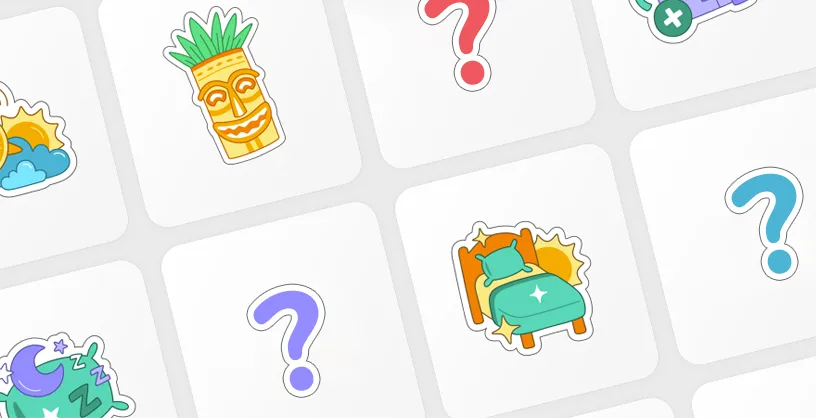
We've all felt it. That feeling in the pit of your stomach before an important meeting or presentation, the clamminess of your hands in a tense social situation, or sleepless nights worrying about finances or the future. Everyday anxiety is common and it's normal. According to Dr Wendy Suzuki, a neuroscientist at New York University and author of Good Anxiety, over 90% of the world's population experience it.
There has been a recent surge in studies suggesting that everyday stress and anxiety could positive. These findings have caused us to rethink the way we handle stressful situations. This is not to say that stress is enjoyable or pleasant, but it is to say that it should not be avoided completely.
Dr Tracy Dennis-Tiwary, professor of psychology and neuroscience at the City University of New York and author of Future Tense, explains that "the problem isn't anxiety itself, but our beliefs about it and our attempts to avoid it." So why should stress and anxiety be embraced and what is the benefit in doing so?
What Is Stress?
Stress is our body's natural response to an external threat or pressure which we call a stressor. Once the stressor is removed, the feeling of stress dissipates - if managed well that is. Anxiety is slightly different from stress. It is that feeling of worry or unease. Unlike stress, it does not always have a specific trigger, although it can be brought on by stress itself. Some would say that stress is the body's response to a trigger, and anxiety is the body's response to stress. The line between the two can sometimes be fuzzy and in many cases, the two terms are used interchangeably as one often does not come without the other.
Anxiety and stress, if not managed properly, can become an anxiety disorder. But the distinction between 'everyday anxiety' and an 'anxiety disorder' is an important one to make. Anxiety disorders lead to functional impairment. This happens when our attempts to cope begin to impede our everyday functioning. We don't leave the house, we avoid social situations at all costs, and we restrict our eating or begin to binge. These struggles require professional clinical intervention and should be taken seriously, especially in light of the recent teenage mental health crisis.
Stress and anxiety have an evolutionary function. They helped our ancestors act in the face of danger and gave them the impetus necessary to solve immediate and short-term problems - such as a lion attacking their camp. It's the well-known fight, flight, or freeze scenario. This is what researchers have called an Immediate Return Environment - when your actions have an immediate outcome.
Today things are a little different. Very few of us face immediate threats or problems. Anxiety and stress-inducing issues are instead long-term and do not require immediate reactions. We are worried about our test next week, or if we will be able to pay our bills next month. This is known as a Delayed Return Environment. The problem lies in the fact that today we face a mismatch. Our primordial brains have not evolved enough to sufficiently deal with the nuance and the complexity of the chronic stressors we face today.
When we feel stressed, our bodies pump out hormones such as epinephrine (adrenalin) and cortisol which give us the energy needed to respond to the threat. Once the threat has passed, our hormone levels return to normal. The problem in this day and age is that the stressors are constant and chronic, and our hormones are unable to return to normal which can have a severe and long-term impact on our health.
How Can Stress Be Positive?
A recent study at Vanderbilt University and the University of California found that exposure to stressful stimuli causes an increase in dopamine production. This new finding was a curveball to neuroscientists who had long linked the feel-good hormone to pleasure and reward. What dopamine does during stress is a little different. According to Erin Calipari, who led the study, dopamine is involved in the coding of relevant information in order to drive adaptive behavior. Information related to the stressor is stored in our memory and made accessible for future scenarios. This is how we learn to adapt and respond more effectively in the future.
Dr Dennis-Tiwary claims that the involvement of dopamine also plays into the uncertainty of anxiety. When you fear that something bad could happen, there is also a chance that it could not -- you might fail your exams or you might embarrass yourself in a social situation. There is essentially hope and a possibility of reward - you might actually excel in your exams or feel super cool at the next party.
Anxiety, when harnessed correctly, can give us the drive to revise harder for our exams, to prepare better for our interviews, or to see a doctor when something concerns us. For this reason, Dr Dennis-Tiwary describes anxiety as a horrible, but beautiful emotion. The power lies in the way we respond to stress and anxiety. Whether we use it as a motivator for positive change, whether we avoid it completely or whether we let it cripple us into passivity.
How Can We Benefit from Positive Stress?
Fortunately, the way we respond to stress and anxiety gives us a degree of control over the way we allow it to affect us and alter our wellbeing. This is thanks to neuroplasticity -- the brain's ability to change. By changing our thinking and taking practical steps to work through anxiety, rather than avoid it, we can transform anxiety into something useful.
In her book, Dr. Suzuki refers to these as the Six Superpowers of Anxiety: "the ability to strengthen your overall physical and emotional resilience; perform tasks and activities at a higher level; optimize your mindset; increase your focus and productivity; enhance your social intelligence; improve your creative skills."
What Can We Do to Activate These Superpowers?
#1 Develop an 'Activist Mindset'
Hopefully, this article will be the first step in changing the way you think about anxiety. Dr Suzuki suggests the adoption of an 'Activist Mindset' to reframe your anxiety. You can channel bad feelings into positive results. Yes, that's right, adopting an activist or change-oriented mindset doesn't mean you get to ignore or avoid negative feelings. The negative feelings are evolutionary and protective. We need to feel them, learn from them, and let them direct our response and our next steps.
To do this, Dr Suzuki suggests looking to our past. When you are faced with an issue, think back on similar issues or trials you faced before. This will give you insight into how to react (because your brain used dopamine to code it, remember?) and will give you the confidence and creativity to figure out a solution. This is a proactive and intentional mindset, looking for inspiration from achievements rather than failures. The more you learn to do this, the easier it will become as your brain begins to adapt and wire neural pathways.
#2 Convert Anxiety into Action
Learn to 'worry well.' Both Dr Suzuki and Dr Dennis-Tiwary recommended 'what if lists' and 'to do lists'. 'What if lists' are those anxiety-provoking scenarios that somehow seem to hit you just when you're trying to fall asleep. What if I offended my friend with that aloof comment I made earlier? What if my constant headaches are caused by an underlying health concern? In these cases, the follow-up actions are simple - a text to your friend the next day or booking an appointment with your doctor. But the key is in the action.
This goes back to how our ancestors dealt with anxiety or stress -- through action. Taking action, although not as intense as running away from a lion, completes the stress cycle and gives you satisfaction. The same can be said for To-Lists and the action of writing tasks down and checking them off. At Coachbit, we teach these helpful methods as 'stress-breakers'. We turn the anxiety of 'What If I don't get an A' into the goal of 'I want to get an A' and put actionable steps into place to achieve the goal.
#3 Let Kids Feel Anxious
It is just as important, if not more important, to allow your kids to navigate and face anxiety. This is often difficult as a parent when all we want to do is make life easy for them and protect them. This has recently been referred to as 'snow-plow parenting'. It is our desire to fix things before they happen and remove all potential obstacles our kids may face.
We need to give them the space to face anxiety, but they don't need to do it alone. Take every opportunity to talk through their emotions and their thought processes with them. If you have a child who struggles with social anxiety, rather than giving them an out and letting them miss a party, ask questions.
Why are you nervous about going to that birthday party? Which part of it scares you the most? What can we do to make it a little easier? From there, guide them in turning their anxiety into action. Help them through anxiety, not around it.
#4 When It's Out of Your Hands
Not all scenarios have an obvious action step to relieve stress or future uncertainty. If that is the case, then there are an array of solutions to help work through the anxiety. Movement (whether it be a run or yoga), creating (writing in a journal, painting, or playing music) and mindfulness, are great places to start. At the end of the day, these are action steps and physical responses to both soothe anxiety and complete the stress cycle.
A Final Thought
Anxiety isn't comfortable, but it also isn't going away. It's there for a reason as our body's in-built response to problems or threats. When we let it overwhelm us it will get the better of us and can lead to long-term problems or disorders. But if we face it and harness it for good we can use it productively to spark creativity, problem-solve and instigate action. Just as important is equipping our kids to do the same. Let's change the way our families think about and approach anxiety and stress.
Recommended Resources
Tracy Dennis-Tiwary, Future Tense
Wendy Suzuki, Good Anxiety
How many core habits and skills is your child missing?
Take our short quiz and find out.
Take our quiz

_Z2dC98e.webp)
